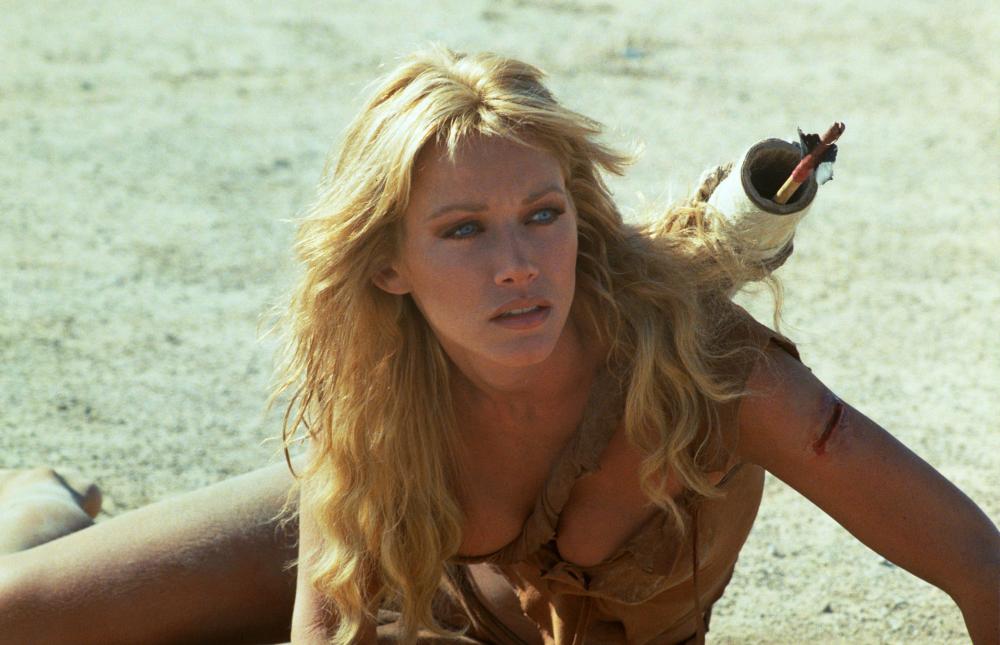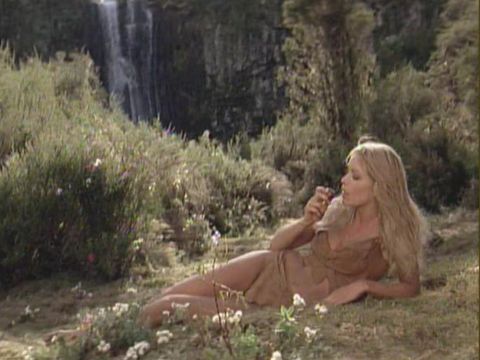In 1984, two years before Howard the Duck crashed and burned in theaters, there was Sheena. Technically, the British comic was printed by Jumbo Comics and later Eclipse Comics but in 1984, the story of Sheena was published as part of Marvel Comics’ Super Special #34, as Sheena: Queen of the Jungle 1 & 2. The female-focused property predated Wonder Woman both in print (1937) and on TV (1955-56) as an attempt to capitalize on the serialized Tarzan films MGM produced. But this is one of the most bizarre, ’80s-fantasy, post-Beastmaster movies.
Let’s get this out of the way immediately: this is not what I would call a GOOD movie. It is a REALLY, REALLY, REALLY STUPID movie that, a few times, just goes bananas. But I have to be honest: it is also a pretty darn entertaining watch. It is what might be described as a good-bad movie and I honestly can’t believe this movie hasn’t found a bit of a cult following because, despite some bizarre cinematic choices and politically incorrect moments, it is a fascinating artifact from the ’80s. Sheena would be great at my next “bad movie night” for being 1) bizarre, 2) entertaining, and 3) making an effort.
So, in case this movie has flown under your radar, be warned, this will contain spoilers because there are elements I really, really need to discuss. Our heroine Sheena, as every single one of these movies requires, is an orphan who survived a cave collapse that killed her parents. The two-year-old seemed to survive by running away before entering the cave, but we’re told it’s actually a miracle because she was “the chosen.” She definitely develops powers under the guidance of her adopted mother who teaches her to communicate with animals. Now, when there is a scene like this (CHILD WITH A SNAKE) that is played completely straight, that was when I knew this is going to be a fun watch.
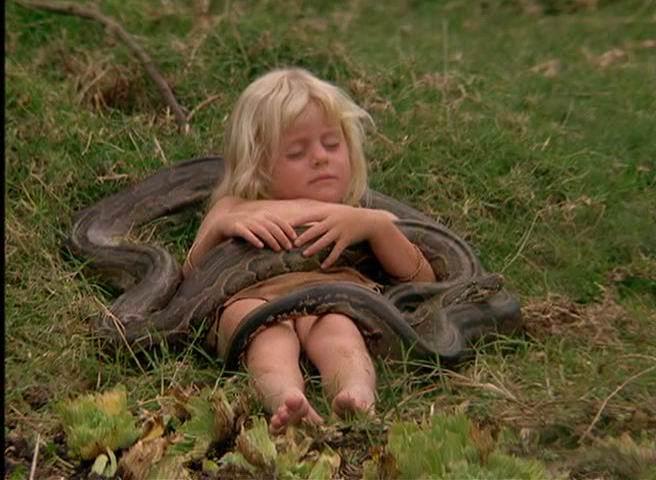
So Sheena becomes former-Charlie’s Angel, future-Bond Girl Tanya Roberts, who has perfect ’80s blonde hair, but also has a pretty athletic body for her role as a super-fast, strong woman raised to talk to animals. The movie has some definite similarities to her previous movie The Beastmaster, but she is WAY better than Marc Singer. A bit vague at times, when she’s given direction Roberts actually can carry a scene and shows some genuine emotion. It makes me curious if the way she was written off as just a pretty face in the 1980s prevented her from developing more substantial acting skills.
Roberts also has considerably more chemistry with her costar (human costar) in Sheena than she ever had with Singer. Playing Vic Casey (yeah, that’s a name), we have a male Lois Lane of sorts played by Ted Wass (aka TV Blossom’s dad). Wass didn’t have much of a career in motion pictures in the ’80s, which included trying to turn him into Peter Seller’s replacement in the Pink Panther films (a painfully bad farce). But Wass has chemistry with Roberts here, selling some pretty ridiculous scenes with a level of commitment that probably wasn’t worthy of this STUPID movie. And I thank them for that, because it made the movie pretty fun.
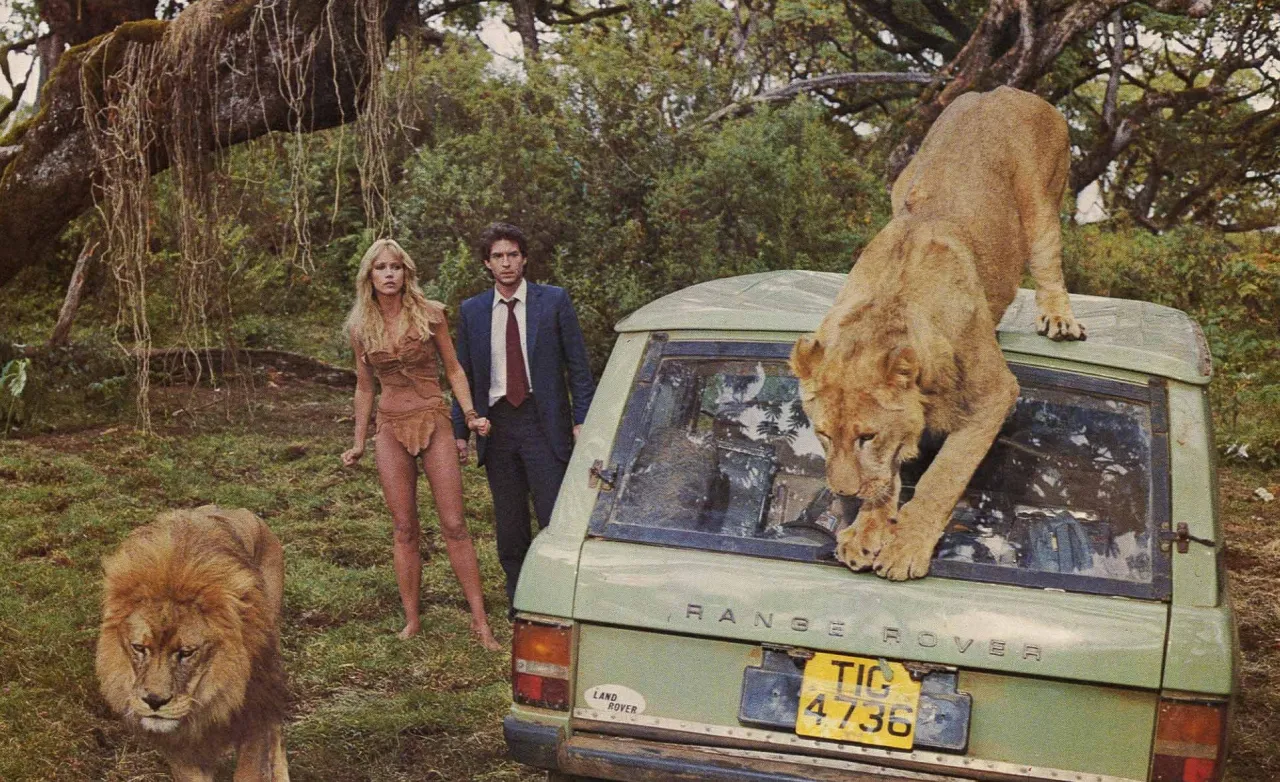
Wass and Roberts also have some unexpectedly progressive moments as a screen couple. Stronger and faster than other men or women, Sheena matter-of-factly declares her abilities, and he doesn’t fight her on it. Vic also doesn’t take this as something to be embarrassed or emasculated by; after all, when she carries him up a tree with just her leg, what kind of argument could he make, practically? And after their initial kiss, naïve Sheena tells big-city sports reporter Vic, “You are an enemy, an enemy is one who takes without asking.” He internalizes the comment, understands, and asks permission to kiss her. I don’t know why, after really hating a similar moment in last year’s Exodus, but in Sheena it (bizarrely) works. It is also surprisingly refreshing that our man Vic doesn’t objectify Sheena nearly as much as other movies had guys do in the ’80s (although he still does in a few early scenes with his friend). His friend, Donovan Scott, should never been included in this movie not only because he is sexist, but also because he’s just straight-up annoying. But considering when she isn’t walking around in animal-skin bikini that Sheena is just naked, the movie’s approach to sex and nudity is downright progressive. And there is a LOT of nudity in this PG-rated movie (both male and female) which is handled almost clinically. After all, how else is she supposed to take a bath?
And shocking as it is, Sheena doesn’t have AS MUCH of a white savior problem as I assumed it would. There is something inherently unnerving about setting ANY frivolous “talking to the animal movies” starring two white actors in the Africa jungle, especially when the conflict is about a King being killed by his brother (Trevor Thomas) after conspiring with his fiancée (Francis Zobda) in order to take over the protected land of secretive Zambouli tribe and get rich on their rich soil. Then we have a Zambouli Shaman (Princess Elizabeth of Toro) who is framed for the assassination and ultimately dies. It’s a lot of weight for a movie that is ultimately, really, really silly. And yet, I wasn’t nearly as offended as I feared I might be (although there are few parts when I did squirm). And I got the sense it really wanted to avoid being offensive, and avoids some mistakes even filmmakers today (EXODUS) still make.
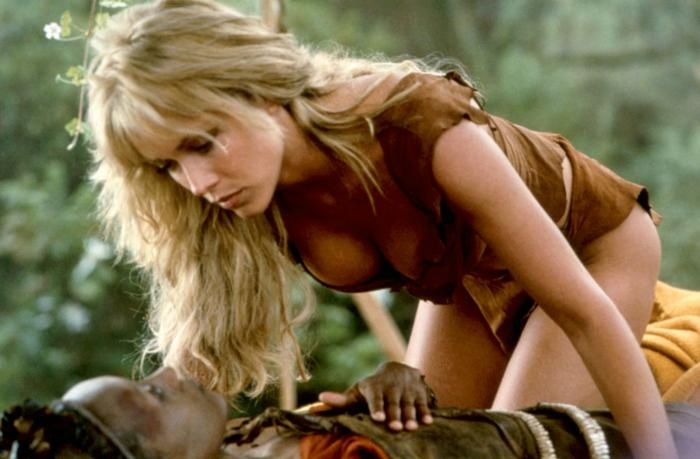
Yes, we have African assassins and native tribe people, but the bad guys are not exclusively black, as we also have John Forgeham as a blood-thirsty colonel. And the “native” tribe people are neither stupid nor ineffective, nor are they dependent on Sheena. She acknowledges the Shaman as her mother with love, and speaks to the chief with respect as a member. It may seem like a small accomplishment to talk about a movie somehow not being overtly sexist or racist, but considering this type of films and its reputation as something ridiculously bad in an era of dopy movies, Sheena accomplishes far more than could have been expected. Look, I didn’t feel dirty watching this movie, just kind of embarrassed.
But let’s get to the other important stuff: the action and animals. Let’s just say, Sheena is friends with elephants and monkeys and rides a Zebra that is clearly a horse with painted-on black stripes. This is an adventure-fantasy ’80s movie before we had a lot of CGI. Visually, the movie is pretty damn impressive and fun to watch. The fact that the movie was filmed in Kenya is obvious; there is a certain sweep to some of the shots of the desert which actually are striking, especially when galloping with a Zebra-horse at dusk. Because this was pre-CGI, there are stunts and action which are both impressive and kinda nuts to consider. For example, the monkeys engaging in a battle by throwing some rocks during a gun fight, or when lions and tigers (yeah, tigers in Kenya) jump in slow-motion on a car, and are immediately passive and sweet, despite the people inside the car losing their shit.
The best and worst scene in this movie is absolutely a bird attack of a helicopter, which is amazing. Twenty years after the ridiculous attacks in The Birds, the effects used are about the same, but filmed WAY WORSE. Few terrible movie scenes have brought me as much joy as this moment in film. Action wise, there’s definitely some skill behind the camera in terms of staging sequences (except the birds). But perhaps because this is a baffling PG movie, despite the machine guns, these soldiers’ aim is about on the level of characters in the A-team. In fact, I don’t know if they killed anyone with their guns, while the tribe spears and arrows everyone. And then there is the amazing truck-zebra-truck climatic chase scene which is crazy. It looks really good, Roberts is pretty solid with that bow and arrow, and (SPOILER) I was not expecting our leading man to plow his car into another car and set himself on fire. I like that the movie went that dark and that our couple don’t end up together. They don’t get a happy ending, and instead Sheena gallops away in tears while an electronic score that reminded me of the Chariots of Fire theme plays behind her.
Am I recommending this movie as some kind of overlooked gem or something worth watching? No (but really yes). This isn’t a good movie. It is so stupid and weird and ridiculous and, at times, pretty damn slow. But considering its clear place in the fantasy ’80s genre which often gets a nostalgic pass, this one fits the niche pretty perfectly… and in a couple cases, actually attempted to do something different. So why didn’t it find ANY audience? Well, besides being a pretty hard movie to edit for TV (again, lots of machine guns and nudity), the movie made it onto a lot of worst-of lists. I won’t say that place isn’t deserved, although 1984 was a terrible year in movies. Besides Cannonball Run 2, Rhinestone, and Where the Boys Are, 1984 brought us a little movie called Greystoke: The Legend of Tarzan, Lord of the Apes, a really boring and super-serious take on the traditional Tarzan tale (with Andie MacDowell dubbed over by Glenn Close). The critics, who cumulatively gave the film a 64% of Rotten Tomatoes, were actually pretty cruel to Sheena (33% on Rotten Tomatoes)…and misogynistic.
Pauline Kael, that beacon of subversive criticism, actually liked it in much the same way I hate like this movie. She wrote in the New Yorker (perhaps the most respected periodical to give a good review) calling it a “lighthearted, slightly loony adventure film is a takeoff of the late-’30s comic-strip heroine who was featured in a mid-’50s syndicated television series” and, despite acknowledging Roberts’ limitations and the lack of big cinematic moments, she liked that the movie “never forgets its own silliness.” Similarly, Janet Maslin admitted that, while not actually a comedy, it was “the funniest film in town” (what else could you expect from the director of The Towering Inferno?) but oddly claimed that the film devotes its running time to ogling Roberts and that “she is in very good shape. That unfortunately, is the best that can be said for her performance.” I’ll be honest, the movie doesn’t shy away from showing her body, but it seems aware that ogling is wrong (the biggest asshole in the movie is guilty of most of the sexism).
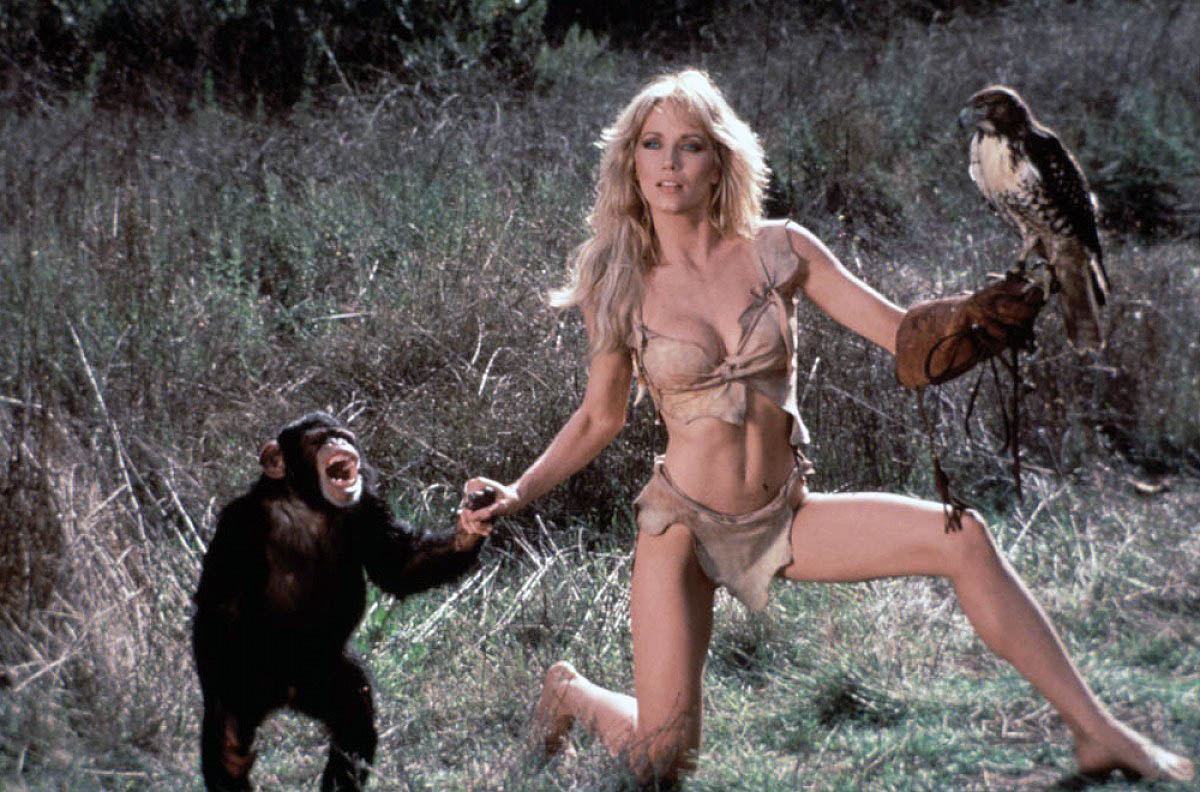
But those comments reflect those of most critics, coming after Roberts for lacking talent, commenting on her body, and then asking to see both more and less. The worst example of this came from a man named Roger Ebert, who (after referring to Elizabeth of Toro as nothing more than a fashion model, forgetting that she was also Uganda’s First Female Barrister whose family lost power to Idi Amin and became a UN ambassador) said that Sheena “is the only PG movie in history that could play directly on the Playboy channel. We see more of Tanya Roberts in this movie than we do of last month’s playmate.” But in his the year end review, Ebert complained that he didn’t get more, saying “‘the movie didn’t have nearly enough scenes of Sheena standing under waterfalls and sunbathing. I have a feeling Tanya Roberts could have saved this picture.” Nice. Further proof that even movies targeting women by portraying them as strong, willful, and in control have to appeal to the male sex drive, and that even blunt, pro-female body displays don’t fit their needs.
As far as ridiculous movies go, Sheena was an entertaining watch that I definitely appreciate on the level of an enjoyable good-bad movie. And as of today, when Marvel won’t have a female-led superhero movie until 2018’s Captain Marvel, I’d rather re-watch this crazy mess than the boring Elektra again (and don’t even get me started on DC’s Catwoman). I’m not recommending this movie as a serious re-watch, but it’s definitely worth a look, perhaps pairing it with Super Girl for an example of how ’80s Hollywood interpreted “female power.”
Lesley Coffin is a New York transplant from the midwest. She is the New York-based writer/podcast editor for Filmoria and film contributor at The Interrobang. When not doing that, she’s writing books on classic Hollywood, including Lew Ayres: Hollywood’s Conscientious Objector and her new book Hitchcock’s Stars: Alfred Hitchcock and the Hollywood Studio System.
Are you following The Mary Sue on Twitter, Facebook, Tumblr, Pinterest, & Google +?



